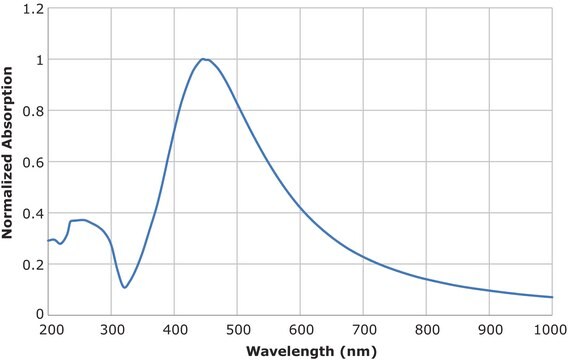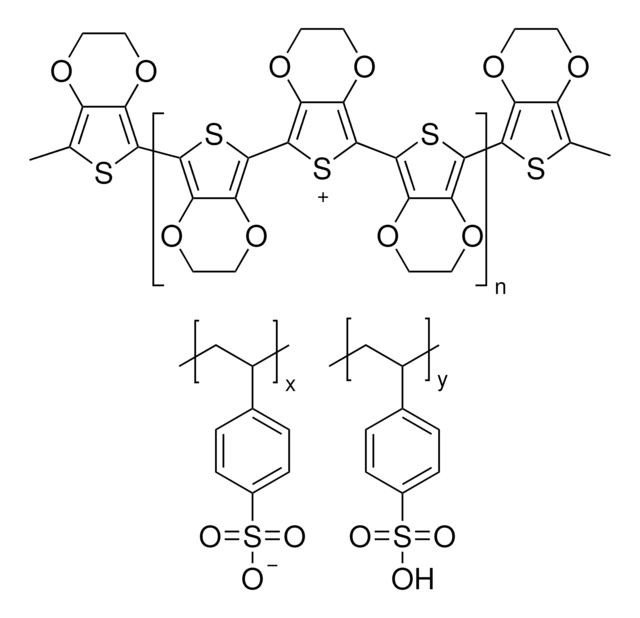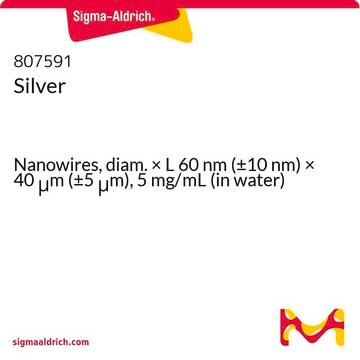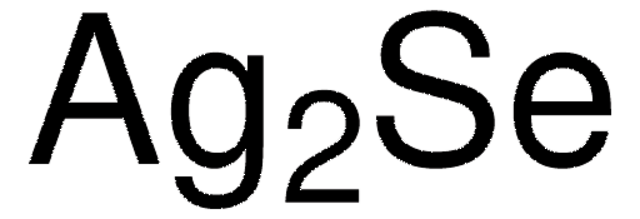Kluczowe dokumenty
778095
Silver nanowires
diam. × L 200 nm × 10 μm, 0.5% (isopropyl alcohol suspension)
Synonim(y):
Silver nanofibers, Silver nanowhiskers, Silver nanowire
About This Item
Polecane produkty
Formularz
liquid (suspension)
nanowires
Poziom jakości
stężenie
0.5% (isopropyl alcohol suspension)
śr. × dł.
200 nm × 10 μm
gęstość
0.779 g/mL at 25 °C
ciąg SMILES
[Ag]
InChI
1S/Ag
Klucz InChI
BQCADISMDOOEFD-UHFFFAOYSA-N
Szukasz podobnych produktów? Odwiedź Przewodnik dotyczący porównywania produktów
Powiązane kategorie
Opis ogólny
Zastosowanie
- In fabricating transparent conducting electrodes (TCEs) because they possess electrical conductivity and optical transparency. Cost-effective solution deposition methods are used to fabricate AgNW-based TCEs for optoelectronic applications.
- In transparent film heaters in smart windows and personal health management.
- In electronic and biological applications including transparent conductors.
- In water sterilization and as components in amorphous semiconductors.
Hasło ostrzegawcze
Danger
Zwroty wskazujące rodzaj zagrożenia
Zwroty wskazujące środki ostrożności
Klasyfikacja zagrożeń
Aquatic Acute 1 - Aquatic Chronic 1 - Eye Irrit. 2 - Flam. Liq. 2 - STOT SE 3
Organy docelowe
Central nervous system
Kod klasy składowania
3 - Flammable liquids
Klasa zagrożenia wodnego (WGK)
WGK 3
Temperatura zapłonu (°F)
53.6 °F - closed cup
Temperatura zapłonu (°C)
12.0 °C - closed cup
Wybierz jedną z najnowszych wersji:
Masz już ten produkt?
Dokumenty związane z niedawno zakupionymi produktami zostały zamieszczone w Bibliotece dokumentów.
Klienci oglądali również te produkty
Produkty
The ability to pattern conductive electrodes is technologically relevant for several applications, including photovolatics, displays, sensors, and biomedical devices.
Silver nanomaterials have unique physical, chemical, and optical properties that are currently being leveraged for a wide variety of biological applications.
Nanomateriały srebra mają unikalne właściwości fizyczne, chemiczne i optyczne, które są obecnie wykorzystywane w wielu różnych zastosowaniach biologicznych.
Among various ceramics, one-dimensional (1-D) piezoelectric ceramics have attracted significant scientific attention for use in energy harvesting.
Global Trade Item Number
| SKU | GTIN |
|---|---|
| 778095-25ML | 4061838103192 |
Nasz zespół naukowców ma doświadczenie we wszystkich obszarach badań, w tym w naukach przyrodniczych, materiałoznawstwie, syntezie chemicznej, chromatografii, analityce i wielu innych dziedzinach.
Skontaktuj się z zespołem ds. pomocy technicznej










